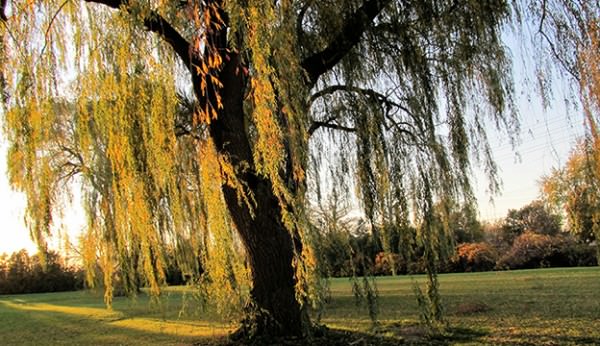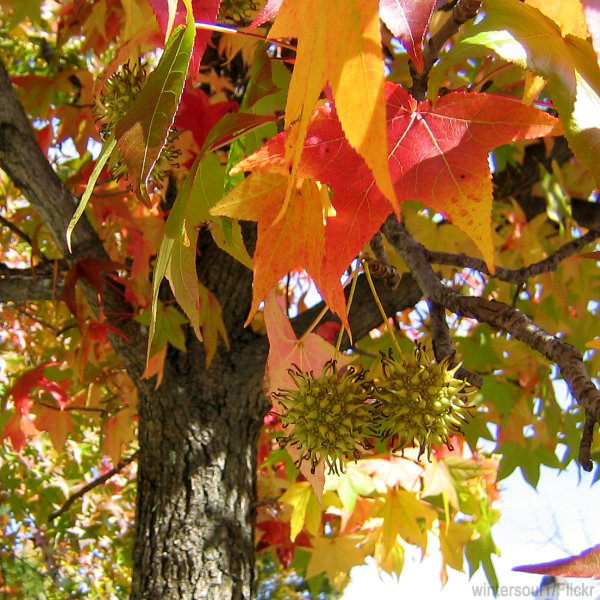
Fast-growing shade trees are a must when you want to add some summer relief to your farm animals, be it horses or livestock.
No matter what kind of animals hang out in your pastures, they’ll appreciate a nice shady place to escape from the heat of the sun. While you could build a shade shelter for this purpose, why not plant a tree that can also add beauty to your property, too? Here are eight fast-growing shade trees that can give that shade in short order.
7 Fast-Growing Shade Trees
1. Hackberry (Celtis occidentalis)

Also referred to as a sugarberry, this relative of the elm tree makes for a hardy shade tree with its cylindrical, drooping branches. Native Americans used hackberry to treat sore throats. The leaves are a showy gold in the fall.
Zone: 2-9
Height: 60 feet
Width: 40-60 feet
Growth per year: 2-3 feet
Culture: With its deep root system, it can handle droughty uplands, but will grow faster and taller in moist bottomlands that receive part shade to full sun.
Spacing: 20-30 feet apart, especially if your soil stays moist
Lifespan: 150-200 years
Also Read: Tips On Selecting Trees For Your Livestock Pasture
2. Tulip Poplar (Liriodendron tulipifera)

When your talking about fast-growing shade trees, you must not forget the Tulip Popular. Also known as yellow poplar or Tulip Tree, this North American native is nicknamed for its yellow, tulip-like blooms. Related to magnolias, its lobed leaves are green in summer and turn gold in the fall. Some specimens in the upper mountainous areas of the Appalachians reach to 190 feet tall. Flowers might not appear for the first few years.
Zone: 5-9A
Height: 80-100 feet
Width: 30-50 feet, maintaining a fairly narrow, oval-shaped crown even at extreme heights
Growth per year: 3 feet
Culture: Tulip poplars enjoy full sun and deep, moist, slightly acidic soil. Their shallower root systems don’t cope well with dry, hot locations.
Spacing: 15-25 feet apart
Lifespan: 300 years
3. Weeping Willow (Salix babylonica: Salix x blanda and Salix x pendulina)

The Babylon weeping willow and the Wisconsin weeping willow are fast-growing shade trees that are so similar in habit and form that they’re usually treated interchangeably. Their drooping branches, thin twigs, small, linear leaves, and classic sweeping foliage make them great pasture trees for stock to browse beneath. They’re one of the first trees to leap out in the spring and turn gold in the fall. Be aware that their invasive roots wreak havoc with pipes and foundations, however.
Zone: 2-9A
Height: 50-70 feet
Width: 50-70 feet
Growth per year: 3-8 feet
Culture: Can handle drought or extensive flooding; partial to full sun; will grow in most soil types
Spacing: 30-50 feet
Lifespan: 50-70 years
4. Sweet Gum (Liquidambar styraciflua)

This North American native, medium- to fast-growing shade tree has glossy, star-shaped green leaves in summer and sports brilliant colors in the fall, ranging from orange and purple to red to yellow. As with willows, its root systems are formidable, so things like pipes and structural foundations will likely lose any battles. The seed pods/fruits of the sweet gum can be messy, but remain clinging to bare branches well into the winter, looking a bit like tiny sputniks and attracting birds to feed on the seeds. If you wish to avoid the mess altogether, look for the Rotundiloba cultivar, which is fruitless.
Zone: 5A-10B
Height: 75 feet
Width: Narrow pyramid to 50 feet
Growth per year: 1-5 feet for the first decade; slower after that
Culture: Part shade to full sun; tolerates wet and dry conditions if rooted in deep soil
Spacing: 15-25 feet
Lifespan: 200-300 years
5. Green Ash (Fraxinus pennsyvanica): A Fast-Growing Shade Tree In Iowa

One of the most adaptable fast-growing shade trees is native to Iowa: The green ash has been planted extensively for windbreaks, riparian zones and pastures. Its fine-grained hard wood is strong and suitable for furniture, sports equipment and more. The subspecies, Arizona or velvet ash (Fraxinus velutina) grows well in the southwestern United States, though some areas of intense sun necessitate a stand of trees to protect them from sunscald. The green ash’s 2- to 4-inch leaves are a showy gold in the fall, and it has large surface roots.
Zone: 2-9
Height: 50-80 feet
Width: 50-70 feet
Growth per year: 2½-3 feet; in warmer moist zones, trees may grow 6-10 feet per season when young.
Culture: Prefer full sun and moist, well-drained soils, but tolerate a wide range of soil conditions.
Spacing: 25-35 feet apart
Lifespan: 120-175 years
6. White Pine (Pinus strobus)

One of the faster growing pines, this favorite has soft bluish-green needles, and are, of course, evergreen. Several white pines planted together can give shade and provide a windbreak along a fence line or in a pasture. White pines don’t tolerate air pollution well and are susceptible to the bark disease, white pine blister rust and the White Pine weevil.
Zone: 4-9
Height: 50-80 feet, though specimens have grown to 150-plus feet
Width: pyramidal, 20-40 feet
Growth per year: 1½-2 feet
Culture: Fertile, moist, well-drained soil and full sun
Spacing: 10-20 feet apart
Lifespan: 200-400 years; one specimen in New York is dated 458 years old
7. Magnolia (Magnolia grandiflora): A Fast-Growing Shade Tree for the South

There are eight magnolias native to the eastern U.S. M. grandiflora, also known as the southern magnolia, big bay, big laurel or large-flower magnolia, has creamy lemon-citronella scented blooms and grows throughout the South. These fast-growing shade trees are lovely evergreen deciduous trees, and they make wonderful stand-alone specimens. These trees sport blooms up to 12 inches across and have been known to grow to 120 feet. Their formidable root systems can be twice the width of their canopies, so don’t plant them too close together. Two of the fastest growing varieties are Margaret Davis and Smith Fogle.
Zone: 4-9 depending on the variety
Height: 60-80
Width: 30-50 feet
Growth per year: 2-plus feet
Culture: Moist, neutral to slightly acidic soil, sun to partial shade
Spacing: 25-35 feet apart
Lifespan: 80-120 years
This article about Fast-Growing Shade Trees was written for Hobby Farms magazine. Click here to subscribe.




